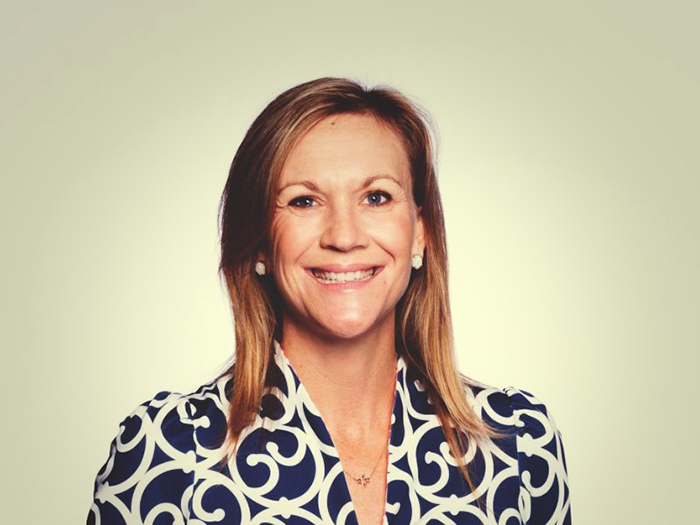Managing Global Risks Comes Down to Relationships, These Risk Managers Share

By now, every person on the planet has realized that a crisis in one region can destabilize other areas of life globally, leaving us all exposed in ways we might not have imagined. Thankfully, those in global risk management already have an eagle-eye for potential threats and are primed to expect the unexpected.
“It only takes one significant disruption to undermine some of the fundamentals of our society — peace, economic security and health security, to name a few,” said Amy Bowman, vice president of multinational business at BHSI.
Whether it’s supply chain issues, cyber attacks, political instability or natural disasters, global risk managers along with their brokerage and carrier partners are charged with keeping a steady pulse on what’s going on around the globe.
“We’re making the business case for it right now by living through this,” Jim Bowen, global risk manager for Griffith Foods, said. “With COVID-19 occurring, and the ripple effects along supply chains, that has [had a] real impact on our business continuity efforts.”
Being Proactive Matters
Finding a way to structure risk management programs that meet the needs of international organizations, especially as the volume and volatility of threats seem to be accelerating, requires a proactive stance from the risk management community.
“Historically, risk managers and insurers have learned and made decisions by analyzing past data and loss trends,” said Carlos Dezayas, head of risk management at Kraft Heinz Company. “And while I think that’s an invaluable resource for situations that are predictable, more and more companies are moving towards areas [where] those predictive models don’t necessarily provide the right view on what the risk future really is.”
“How do you focus on the correct innovation path for your future?” is a question Robert Lockery, global insurance lead for UCB, often considers.
“We need to make sure to continue our innovation for things to come 5-10 years down the road that we don’t fully understand the risk,” he said.
Forging Resilient Relationships
Working on behalf of an enterprise with a large international footprint, Dezayas has built a risk management program anchored in the importance of mutual understanding.
“Whenever you’re building a global program, there is that initial challenge in terms of understanding the connectivity and policies, such as having a global master policy with local tie-ins, to have fronting arrangements, reinsurance arrangements,” Dezayas said.
“It’s about understanding the business needs on not only a global level but also the local level as well … When you’re discussing the businesses on a local level,” it’s important to understand “why is a local policy necessary or not, and where is the local team coming from whenever they have certain challenges.”
Lockery aims to listen and be flexible to the needs of the in-country groups for which he provides corporate insurance servicing. “They know all the local customs, so it’s best for me to learn when we’re starting the discussion on the challenge they might have and then apply how best it fits into our overall global corporate strategy,” he said.
Working to understand the local financials and the ability of local entities to take on risk is something Dezayas strives for as he designs programs to be resilient. “Sometimes, the decisions that are best for the company, as a whole, raise challenges at the local level,” he said.
At times, deploying other risk financing tools like captives are needed “to give the [local] business the certainty that they need.”
Often Dezayas is called upon to determine the best way to use insurance as a risk management tool: “It’s really having that better understanding and explanation of the risk financing on a basic level to [understand] the trade-offs with limited pools.”
For Dezayas, insurance is really a tool for higher-level events. “We don’t necessarily want insurance to be paying claims on our behalf on an ongoing basis,” he said.
Who Are You Going to Call?
Finding the right insurance product to meet a company’s needs is also a challenge. “As a buyer of insurance products, sometimes you’re looking at what is available in the marketplace to address your risks. But sometimes, there really isn’t that suitable match to what your needs truly are,” Dezayas said.
This is where having strategic brokerage and carrier partnerships is vital. Recognizing the significant amount of coordination involved in mapping coverage that spans 30 countries, Lockery looks to his brokerage partnership with Aon to streamline things.
“We do our best to run the most efficient program, where we’re issuing a majority of everything on a global policy and then issuing local paper,” Lockery said. And by having a comprehensive brokerage partner that services local requirements and policies, Lockery avoids “having to be the conduit between different brokers.”
Having a strong broker partner is the most important external relationship for Bowen, and he has carefully chosen his partners for more than their knowledge of insurance.
“I very much rely on those partners for their risk management expertise [and] acumen,” he said. “That’s usually my first call for anything risk related.”
Meeting Unique Coverage Needs
While plenty of insurance markets and carriers claim to have an international footprint, Bowen has found that only a handful of markets really have the capability to provide the level of support needed for global business.
“It’s a fairly narrow group,” he said, making the carrier partnerships he has with FM Global and Chubb critical. “[We’ve] found them to be entirely capable at all of the markets we serve and even the ones that we could potentially serve in the future,” Bowen said.
Carriers that Dezayas works with offer solutions “that work outside of monoline product offering approach,” he said.
“They really are there to help either reduce risk or think about risk cross functionally for us across the organization and not just how it impacts them from a short-term perspective,” Dezayas said. “Helping us get a grasp on our risk and better manage our risk … ultimately helps them as well.”
“The nature of a global program is that they’re not one-size-fits-all,” Stefan Homberger, head of multinational casualty in the global risk management business in the U.S. for AXA XL, explained.
“Each program is different depending on the client’s operations—what they do, where they operate, in which countries. So, it really needs to be tailored to the specific needs.”
The ability to craft unique participation structures, either around fronting or reinsurance to facilitate the deployment of alternative capital, has been important to Dezayas when choosing carrier partners.
“Whether it’s our own captives or some of the market entrants that aren’t traditional insurance avenues … being able to work with a carrier that’s able to facilitate that capital [is] extremely helpful,” Dezayas said.
For carriers to craft the best possible program that will deliver peace of mind for all parties, the more transparently and thoroughly a risk manager can communicate their needs and objectives, the better.
When a risk manager has a strong understanding of their business across all geographies they operate in, and they can establish a clear vision and strategy to address their organization’s unique risk profile, this makes things much easier for underwriters like Christian Andrews, senior vice president, executive and professional underwriting officer for BHSI.
“This encompasses everything from understanding their property values in a specific country, to knowing where their directors and officers are located, to determining which risks will be retained by the organization versus which risks will be transferred through insurance,” Andrews said.
Can Tech Help with Vetting Across Borders?
The insurance industry’s movement toward greater integration of technology is something Bowen sees as having great potential to support the international risk management community, especially risk managers.
“It’s such a challenge to accommodate all regulatory compliance globally and international taxes and responsibilities,” Bowen said.
Vetting also presents an opportunity for third-party or technological support. “That is definitely an area for risk managers that we’re going to have to rely upon outside, either external service partners [or] technology platforms, to assist better because it really is an administrative hurdle as well as [an] awareness and understanding that I think technology can help with,” Bowen added.
Proper vetting cannot be underestimated, as Andrews noted: “Understanding who you’re doing business with is critical when building relationships in other countries, whether you’re hiring your own team locally or using subcontractors.
“We’ve seen firsthand how a failure to properly vet and screen business partners in other countries can lead to liability claims,” he said.
Constant, Consistent Collaboration
Forging resiliency in the face of the constant threat of business interruptions on a global scale requires more than strategic financial investments.
“Relationship building takes time and attention,” Bowen said. “The biggest challenge is finding the time and being efficient … in order to spend that time and really connect on a professional and personal level with people.”
From those relationships, better collaboration is possible. “Delivering a uniform risk management solution effectively and efficiently is dependent on uncompromising collaboration between all of the stakeholders,” BHSI’s Bowman said.
“Without constant, consistent collaboration, the execution of global insurance programs can be hampered,” Bowman said.
It’s beneficial for all parties to bring a collaborative mindset to the table. “Often, especially with international organizations, there’s no one-size-fits-all solution,” Andrews said. “So, risk managers, brokers and carriers need to collaborate together to identify the best possible solutions based on the specific needs of each customer.”
Transparency among all parties makes finding optimal solutions possible, “particularly when it comes to expectations, capabilities and timelines,” Andrews said. “This helps to build trust and demonstrate accountability.”
“A critical part of this for us is really knowing who we’re doing business with, including understanding if our partners have well-constructed business continuity plans and knowing if there are alternatives in local markets in the event that one is needed,” Bowman added.
Facing the Bumps in the Road
Though no risk manager wants to be reactive to bumps in the road, there are times when there’s no way around them.
And for Bowen, trying times have been the circumstances from which trust is born: “Where we have faced challenges, whether it be through claims activities or disaster-type events, those were the times I had an ability to really dig in and meet people, work with them face-to-face every day, because there was a need,” he said.
And there is value to be found in facing obstacles with business affiliates; the connections are deeper and a level of professional trust is developed. “I guess [it’s] good and bad that we had to go through some difficulties with those individuals. But through those challenges, a lot of relationships are really made,” Bowen said.
Having to engage in difficult conversations, sometimes comes down to timing, especially around rate changes at renewal. For AXA XL’s Homberger, the earlier the communication can happen, the better for all parties.
“Nobody likes surprises. So, to communicate early enough is key as well to maintain that trust,” he said. “The most successful programs are the ones where we have a true triangular relationship.
“Someone used to say, if you walk into a room and you see a broker, a carrier and the client discuss an issue that needs to be solved, if you can’t tell who is the client, who is the broker, and who is the carrier—that’s a perfect relationship, when everybody just focuses on solving the problem,” Homberger said. &













